#WritingBrushes
Explore tagged Tumblr posts
Text
Calligraphy Brush Basics: Master the Art of Brushes
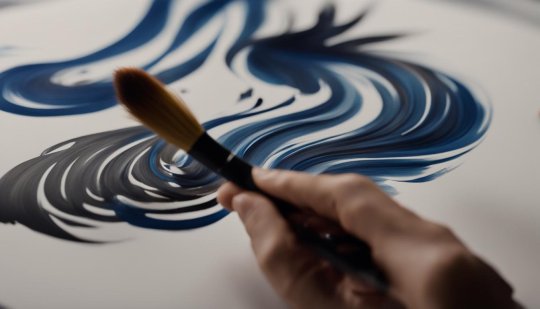
Calligraphy Brush Basics: A Beginner's Guide to Mastering Brush Lettering
Welcome to our comprehensive guide on calligraphy brush basics. In this section, we will delve into the world of calligraphy brushes and equip you with the knowledge and skills to master their use. Whether you are a beginner or looking to refine your calligraphy techniques, this guide will provide you with essential tips and insights to help you create beautiful brush strokes and maintain your brushes with care. Key Takeaways: - Understanding different brush types is crucial for selecting the right tool for your calligraphy projects. - Mastering brush strokes involves techniques such as creating light upstrokes and heavy downstrokes. - Proper brush care and maintenance are vital for preserving the quality and longevity of your brushes. - Exploring brush materials and reputable brands will help you make informed purchasing decisions. - Brush pens and paintbrushes offer convenience and versatility in calligraphy and brush lettering.
Understanding Calligraphy Brush Types
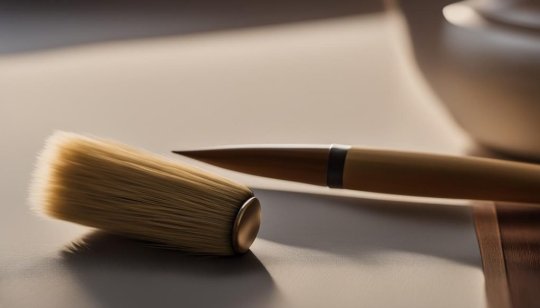
When it comes to calligraphy, the type of brush you use plays a crucial role in achieving the desired effects. There are various types of calligraphy brushes available, each with its own unique characteristics and uses. By understanding the different brush types, you can choose the right tool for your calligraphy projects and elevate your skills to the next level. Here are some common calligraphy brush types: - Sumi Brush: Traditional Japanese brush made from animal hair, known for its versatility and ability to create thin to thick strokes. - Flat Brush: A wide brush with flat bristles, perfect for creating bold and expressive strokes. - Round Brush: Has a pointed tip and is ideal for creating precise and delicate letterforms. - Brush Pen: Offers the convenience of a marker with the flexibility of a brush, allowing for smooth and controlled strokes. Choosing the right brush depends on your personal preference and the style of calligraphy you want to achieve. Experimenting with different brush types can help you discover your preferred tool and unleash your creativity.
Mastering Calligraphy Brush Strokes

Mastering calligraphy brush strokes is crucial for achieving beautiful and expressive lettering in your calligraphy projects. With the right techniques, you can create a variety of strokes that add depth, dimension, and style to your writing. Whether you are a beginner or looking to improve your skills, this section will guide you through the essential brush strokes used in calligraphy. To start, let's explore the basics of creating light upstrokes and heavy downstrokes. Light upstrokes are created by applying minimal pressure while moving the brush upwards. On the other hand, heavy downstrokes require more pressure as you move the brush downwards. This contrast between light and heavy strokes is what gives calligraphy its unique look and feel. Another important technique to master is angling the brush for different effects. By holding the brush at a certain angle, you can achieve variations in line width and texture. Experiment with different angles to create thin, delicate lines or bold, confident strokes. Remember to practice and experiment to find the angles that work best for you and the desired effect you want to achieve. Quote: "The art of calligraphy lies in the mastery of brush strokes. Each stroke carries the essence of your message, expressing emotions and bringing words to life." - Calligraphy Master Pressure is another crucial element in brush stroke mastery. Apply varying degrees of pressure to the brush as you make your strokes to create depth and variation in your letterforms. By pressing lightly, you can achieve thin lines, while applying more pressure will result in thicker lines. This play of pressure adds visual interest and a dynamic quality to your calligraphy. Remember that mastering calligraphy brush strokes takes time and practice. The more you experiment with different techniques and strokes, the more confident you will become in your abilities. So don't be afraid to make mistakes and explore new styles. Embrace the artistry of calligraphy and let your brush strokes tell your story. Table: Calligraphy Brush Stroke Techniques Brush Stroke Description Light Upstrokes Made by applying minimal pressure while moving the brush upwards, creating thin lines. Heavy Downstrokes Require more pressure as you move the brush downwards, resulting in bold and thick lines. Angling the Brush Hold the brush at different angles to achieve variations in line width and texture. Pressure Variation Apply different degrees of pressure to create depth and variation in line thickness.
Tips for Brush Care and Maintenance
Proper care and maintenance of your calligraphy brushes is crucial to ensure their longevity and optimal performance. By following these tips, you can keep your brushes in excellent condition and ready for your next calligraphy project. 1. Clean your brushes regularly To prevent the buildup of dried ink or paint in your brush bristles, it's important to clean your brushes after each use. Rinse them thoroughly with warm water and gently massage the bristles to remove any residual color. Avoid using harsh soaps or cleaners, as they can damage the brush hairs. Allow the brushes to air dry completely before storing them. 2. Store your brushes properly When not in use, store your calligraphy brushes in a dry and clean container with the bristles facing upward. This helps to maintain the shape and prevent the bristles from becoming misshapen or bent. Avoid storing your brushes in airtight containers or with the bristles pressed against any surface, as this can cause the bristles to warp or lose their flexibility. 3. Protect the bristles When using your brushes, be mindful of how much pressure you apply and avoid dragging the bristles against rough surfaces. This can lead to fraying or splitting of the bristles, which affects the brush's performance. Additionally, avoid dipping your brush too far into ink or paint, as this can cause the liquid to seep into the ferrule (metal part) of the brush and damage the bristles. Brush Care Do's Brush Care Don'ts - Clean your brushes after each use - Store brushes with bristles facing upward - Allow brushes to air dry completely - Use a brush holder or container for storage - Avoid using harsh soaps or cleaners - Don't store brushes in airtight containers - Avoid pressing bristles against surfaces - Don't dip brushes too far into ink or paint By following these simple tips for brush care and maintenance, you can prolong the lifespan of your calligraphy brushes and ensure they continue to deliver smooth and precise strokes. Taking the time to properly care for your brushes will not only save you money in the long run, but it will also contribute to the overall quality of your calligraphy work.
Exploring Brush Materials and Brands

When it comes to calligraphy brushes, the choice of materials can greatly impact the quality and performance of your strokes. Understanding the different brush materials available can help you make informed decisions when selecting the right brush for your calligraphy projects. In this section, we will explore various brush materials commonly used in calligraphy and recommend reputable brands that offer high-quality options. Brush Materials Brushes for calligraphy can be made from a variety of materials, each with its own unique characteristics and advantages. Some common brush materials include: - Weasel Hair: Weasel hair brushes are known for their fine, flexible bristles, making them ideal for creating delicate and precise strokes. They are often preferred by experienced calligraphers who value control and precision in their work. - Goat Hair: Goat hair brushes are softer and more absorbent, making them suitable for larger brush strokes and bold lettering. They are known for their ability to hold a generous amount of ink, resulting in rich and vibrant lines. - Mixed Hair Brushes: Mixed hair brushes combine different types of bristles, offering a balance between stiffness and softness. They can provide versatility and are often favored by calligraphers looking for a brush that can handle various styles and techniques. While these are just a few examples, there are many other brush materials available, each with its own unique properties. It's important to experiment with different materials to find the brush that suits your personal preferences and calligraphy style. Reputable Brush Brands When it comes to purchasing calligraphy brushes, it's important to choose reputable brands that prioritize quality and craftsmanship. Here are some well-known brush brands that are highly regarded in the calligraphy community: Brand Description Zig Zig is a trusted brand known for its high-quality calligraphy brushes and brush pens. They offer a wide range of options catering to different brush materials and styles, ensuring that you can find the perfect tool for your calligraphy needs. Kuretake Kuretake is a long-standing Japanese brand that specializes in traditional calligraphy brushes. Their brushes are renowned for their craftsmanship and durability, making them a popular choice among professional calligraphers. Ratnanjali Ratnanjali is an Indian brand known for its high-quality calligraphy brushes made from natural hair. Their brushes are widely praised for their smoothness and precision, allowing calligraphers to create beautiful letterforms effortlessly. These are just a few examples of reputable brush brands, and there are many other options available. It's recommended to explore different brands and read reviews to find the one that suits your needs and budget.
Using Brush Pens for Calligraphy
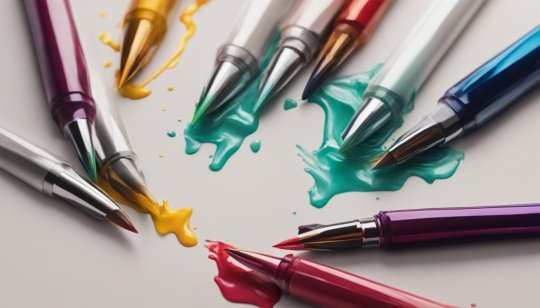
Brush pens are a popular tool among calligraphy enthusiasts for their convenience and versatility. These pens combine the control of a traditional brush with the convenience of a pen, making them ideal for both beginners and experienced calligraphers. The brush pen's flexible bristles allow for a wide range of brush strokes, making it easy to achieve beautiful lettering results. One of the key benefits of using brush pens for calligraphy is their ease of use. Unlike traditional brushes, brush pens do not require separate ink wells or constant dipping into ink. They are pre-filled with ink, ready to use with just a gentle squeeze or a twist of the pen. This makes them a convenient choice for on-the-go calligraphy or when you need to quickly create lettering without the hassle of ink bottles and brushes. When selecting brush pens for calligraphy, it's important to consider the size and firmness of the brush tip. Different brush pens offer varying levels of flexibility, which can have an impact on the stroke width and style of your lettering. Experiment with different brush pen brands and tip sizes to find the one that suits your preferred calligraphy style. To get started with brush pens, begin by practicing basic brush strokes and letterforms. Start with light pressure to create thin upstrokes, and apply more pressure for thicker downstrokes. With practice and experimentation, you'll develop a sense of control and consistency in your strokes. Brush pens are also great for creating blended color effects by layering different ink colors on top of each other. Benefits of Brush Pens for Calligraphy Considerations when using Brush Pens - Convenient and portable - No need for separate ink wells - Easy to use for beginners - Wide range of brush stroke possibilities - Selecting the right brush pen tip size - Experimenting with different brands - Practicing control and consistency in strokes - Layering colors for blended effects "Brush pens offer the perfect balance of convenience and versatility for calligraphy enthusiasts. With their pre-filled ink and flexible bristles, they make it easy to achieve beautiful lettering results without the hassle of traditional brushes." Exploring Brush Pen Brands There are numerous brush pen brands available in the market, each offering their own unique features and qualities. Some popular brush pen brands include: - Tombow Dual Brush Pens: Known for their blendable ink and flexible brush tips, Tombow Dual Brush Pens are a favorite among calligraphers and artists. - Kuretake ZIG Brushables: These brush pens feature dual brush tips with one end offering a brush tip and the other a fine point, providing versatility for different calligraphy styles. - Pentel Arts Pocket Brush Pen: With its fine nylon brush tip, the Pentel Arts Pocket Brush Pen offers excellent control and precision for detailed lettering. When selecting brush pen brands, consider factors such as ink quality, brush tip durability, and availability of refillable ink cartridges. It's also helpful to read online reviews or seek recommendations from fellow calligraphers to find brands that suit your preferences and needs.
Exploring Paintbrushes for Brush Lettering
https://www.youtube.com/watch?v=BlM4KpD046Y When it comes to brush lettering, don't limit yourself to traditional calligraphy brushes. Paintbrushes can also be a fantastic tool for creating beautiful letterforms with a unique texture and style. In this section, we will delve into the world of paintbrushes and explore the types and techniques that can elevate your brush lettering. Types of Paintbrushes There are various types of paintbrushes available, each with its own characteristics and suitability for specific lettering styles. Here are some popular options: - Round Brushes: Known for their versatility, round brushes have a pointed tip that allows for precise control over thin and thick strokes. They are suitable for a wide range of lettering styles, from delicate scripts to bold, expressive calligraphy. - Flat Brushes: With their rectangular shape, flat brushes are ideal for creating broad, consistent strokes. They are perfect for lettering that requires a more uniform appearance, such as block lettering or modern calligraphy. - Fan Brushes: If you're looking to add texture and flair to your brush lettering, consider using fan brushes. These brushes have bristles spread out in a fan shape, allowing you to create unique effects and add depth to your letterforms. Techniques and Tips Here are some techniques and tips to enhance your brush lettering using paintbrushes: - Vary Pressure: Experiment with applying different levels of pressure to the brush while lettering. Light pressure creates thin, delicate strokes, while heavier pressure results in thicker, more dramatic lines. - Blend Colors: Paintbrushes offer the opportunity to blend colors seamlessly. Dip your brush in multiple shades and gently mix them on paper to create stunning gradient effects in your lettering. - Try Dry Brushing: Dry brushing involves using a relatively dry brush with minimal water or paint. This technique creates a textured, rough appearance in your lettering, adding a unique touch to your designs. By exploring the world of paintbrushes for brush lettering, you can unlock new possibilities and bring a fresh perspective to your calligraphy. Don't be afraid to experiment with different brush types and techniques to find your unique style and create lettering that truly stands out.
Digital Options for Hand-Lettered Calligraphy
With the advancement of technology, digital options have opened up new possibilities for hand-lettered calligraphy. Digital calligraphy allows you to create beautiful lettering using digital platforms such as Procreate, making it accessible and convenient for both beginners and experienced artists. By combining traditional calligraphy techniques with digital tools, you can unlock endless creative opportunities and explore the world of digital art. If you prefer working digitally or want to expand your calligraphy skills beyond traditional methods, digital calligraphy is a fantastic option. It offers features like limitless color palettes, customizable brushes, and the ability to easily undo and edit your work. The versatility of digital tools allows you to experiment with various styles and effects, helping you develop your unique calligraphy style. Learning digital calligraphy may seem intimidating, but there are plenty of resources available to help you get started. Online tutorials, YouTube videos, and online communities can provide guidance and inspiration. Additionally, Procreate offers a wide range of brush packs specifically designed for calligraphy, making it easy to achieve realistic and high-quality lettering. Whether you choose to embrace traditional calligraphy techniques or explore the digital realm, the key is to practice and experiment. Combining both traditional and digital methods can lead to unique and stunning calligraphy creations. So, grab your digital pen and start your journey into the world of hand-lettered calligraphy!
Practicing Calligraphy Letterforms
You've learned about the basics of calligraphy brushes and mastered various brush strokes. Now it's time to put your skills to practice by focusing on calligraphy letterforms. By practicing different letter strokes and connecting letterforms, you'll develop proficiency and confidence in creating beautiful and consistent lettering in calligraphy. Start by practicing angled downward strokes, which are the foundation of many letters. These strokes give your letters a clean and elegant appearance. Experiment with creating light upward strokes to add contrast and variation to your letterforms. Connecting letterforms smoothly is another important aspect of calligraphy. Pay attention to the spacing between letters and strive for consistency in your letter connections. It's recommended to practice calligraphy letterforms regularly to refine your technique and muscle memory. Set aside dedicated practice sessions where you focus solely on creating letterforms. Use calligraphy guide sheets or templates to help you maintain consistent letter heights and proportions. Remember, calligraphy is an art that requires patience and practice. Each stroke and letterform you create is an opportunity to improve and express your unique style. Keep practicing and experimenting with different brush strokes and styles to develop your own artistic voice in calligraphy. Sample Calligraphy Letterforms Practice Sheet: Uppercase Lowercase A B C D E F G H I J K L M N O P Q R S T U V W X Y Z a b c d e f g h i j k l m n o p q r s t u v w x y z Practice makes perfect. Don't be discouraged if your letterforms don't turn out exactly as you imagined at first. With time and practice, you'll see improvement. The journey to mastering calligraphy letterforms is an ongoing process, but the rewards are well worth it.
Advanced Letterforms and Techniques
Now that you have mastered the basic letterforms in calligraphy, it's time to take your skills to the next level with advanced letterforms and techniques. Read the full article
0 notes
Text

Recall that dialogue can be broken down into beats of underlying action and strategy. When speaking, characters have basic strategies that they're trying to play out through the use of words. Paul Gulino asks us to identify these strategies as verbs: "And the kind of verbs you're looking for are things like 'attack', 'defend', 'deflect', 'persuade', 'seduce'. Those are the kind of verbs you want the lines to have. You don't want 'explain' because it's emotionally neutral." In most cases we want to avoid situations where a character is simply driven by a desire to explain or inform. We can, however, make this desire more interesting by making it hard to *want* to do. In his book The Craft of Scene Writing, Jim Mercurio gives this example, "If two cops at a crime scene are dispassionately discussing the murder, even if we are learning about their characters and how they do things, that’s too easy. Whom is it hard for? It could be as simple as having to make them break the news to the spouse of the victim. In fact, what if the victim’s spouse stumbles upon the scene and overhears the cops’ egregiously detached tone and calls them on it? Now, suddenly, the act of explaining the details or relaying information is fraught with tension and conflict." If you've got a character who's going to explain something, make it hard for them to want to do.
#screenwriting#storytelling#writing#amwriting#writers#writers on tumblr#writingtips#creative writing#authors on tumblr#authors#writenow#writercommunity#writerblr#writebrl#writingbrush#writingblr#writing community#writingcommunity#writing tips#writing advice#writing resources#writing reference
19 notes
·
View notes
Photo
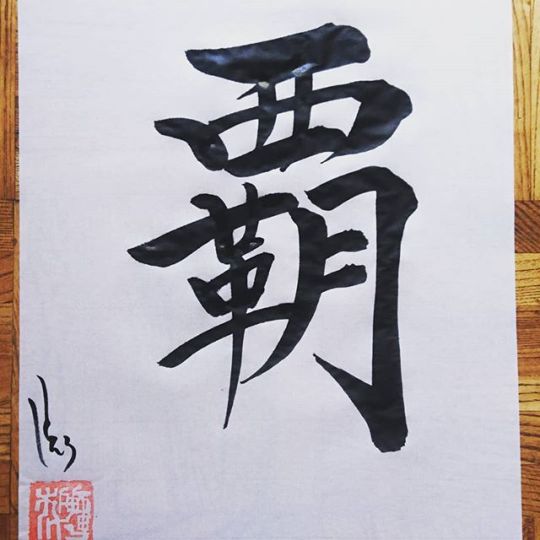
【はたがしら.かしら.ハ】迫力ある字にならなかった😱 From Instagram
#japaneseculture#書道#書道家#書道家と繋がりたい#書道好きと繋がりたい#書道好き#覇#毛筆#毛筆字#アート#アーティスト#アーティストと繋がりたい#art#artist#artistic#japaneselanguage#writingbrush
1 note
·
View note
Photo
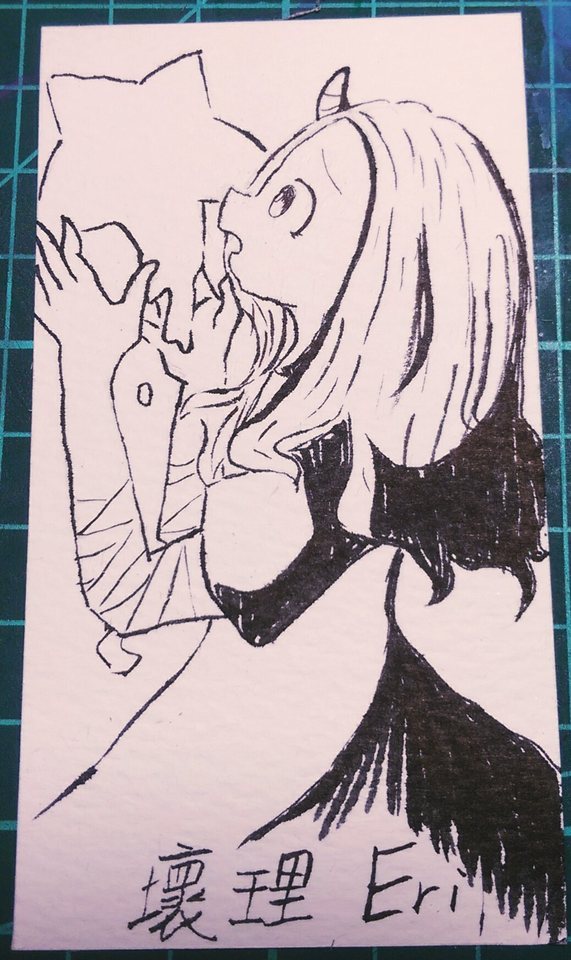
My Hero Academia-Eri
3 notes
·
View notes
Photo
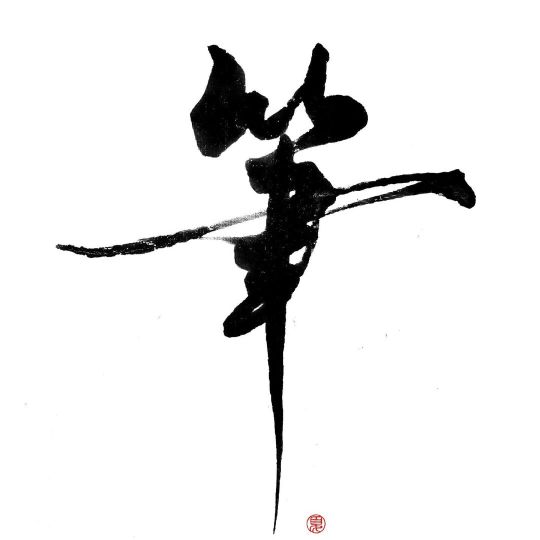
#筆 #pen #brush #writingbrush . #水書き #水書き書道 #漢字 #書道 #書法 #書遊 #毛筆 #墨 #習字 #日本文化 #筆文字 #文字 #和文化 #創作書道 #インスタ書道部 #書道好きな人と繋がりたい https://www.instagram.com/p/CVvEqJ8PABk/?utm_medium=tumblr
0 notes
Photo

#力 mean #power /#strength #regularscript #書法 #書家 #書法藝術 #書道 #書道作品 #書 #書写 #楷書 #shodo #inkart #inkwriting #writingbrush #calligraphyquotes #calligraphybasics #calligraphybeginner #calligraphy_daily #calligraphytattoo #calligraphydesign #calligraphytutorial #calligraph #calligraphy #calligraphydaily #chinesecalligraphytattoo #chinese #chinesetattoo #Chinesecalligraphy https://www.instagram.com/p/COzM7E5ly85/?igshid=1tqee92o10swl
#力#power#strength#regularscript#書法#書家#書法藝術#書道#書道作品#書#書写#楷書#shodo#inkart#inkwriting#writingbrush#calligraphyquotes#calligraphybasics#calligraphybeginner#calligraphy_daily#calligraphytattoo#calligraphydesign#calligraphytutorial#calligraph#calligraphy#calligraphydaily#chinesecalligraphytattoo#chinese#chinesetattoo#chinesecalligraphy
0 notes
Photo

幫來自北京卻遠赴西雅圖的核能電子唱詩叔叔團 Late Troubles 製作專輯封面、用畫來表達那種夜晚憂鬱與中年孤單糾結的情色想像,數位發行「搶先曝光」、接著忙黑膠內附漫畫。 早安!需要設計時想到找我喝咖啡啊。 #design #dizzyha #latetroubles #dizzyha #calligraphy #Writingbrush #brush #chinesebrush #drawing #ink #inkpainting #painting #畫字 #書 #書道 #instadraw #instapainting #painting #drawing #artwork #artofday(在 早安@Morning Design)
#latetroubles#design#calligraphy#書#painting#instadraw#instapainting#chinesebrush#書道#brush#writingbrush#ink#inkpainting#dizzyha#artwork#artofday#drawing#畫字
1 note
·
View note
Photo
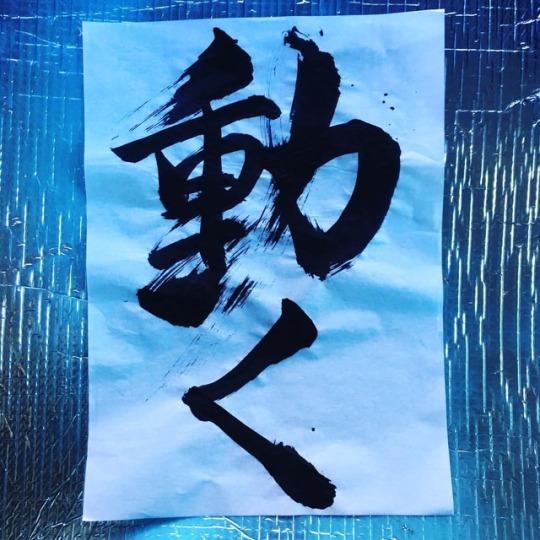
New Year's resolution #onthemove 👅 instagram.com/coyote_00_/ _ I do the Japanese traditional First Writing of the year every year🤘 _ #japanesecalligraphy #calligraphy #resolution #indianink #tagging #graffitiporn #whitepaper #inkbrush #writingbrush #brushlettering #brush #ink #blackandwhiteart #pendrawing #blackwork #tattoodesign #hiphopart #vansskateboarding #harajyuku #tokyoart #designfestagallery #tokyograffiti #japangraffiti #japanartist #グラフィティ #今年の抱負 #書き初め #書道 #動く https://www.instagram.com/p/BsHuQuAFA0N/?utm_source=ig_tumblr_share&igshid=dx9qwzdc28
#onthemove#japanesecalligraphy#calligraphy#resolution#indianink#tagging#graffitiporn#whitepaper#inkbrush#writingbrush#brushlettering#brush#ink#blackandwhiteart#pendrawing#blackwork#tattoodesign#hiphopart#vansskateboarding#harajyuku#tokyoart#designfestagallery#tokyograffiti#japangraffiti#japanartist#グラフィティ#今年の抱負#書き初め#書道#動く
0 notes
Photo
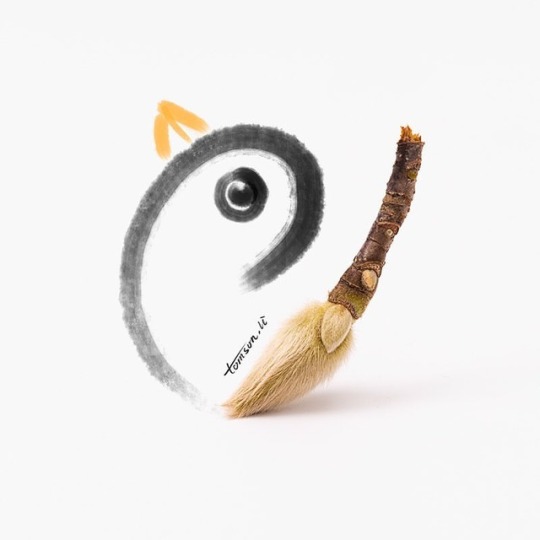
bird 画个鸟 . . . #illustration #draw #art #ideas #drawing #creatividad #streetart #tomsonli #idea #illustrationartist #picturebook #illustrated #combine #stilllife #bird #writingbrush #Magnolia #bud #Chinesestyle #animal #winter https://www.instagram.com/p/Bqy1MQsHyrE/?utm_source=ig_tumblr_share&igshid=bkllfz5rjukl
#illustration#draw#art#ideas#drawing#creatividad#streetart#tomsonli#idea#illustrationartist#picturebook#illustrated#combine#stilllife#bird#writingbrush#magnolia#bud#chinesestyle#animal#winter
0 notes
Photo
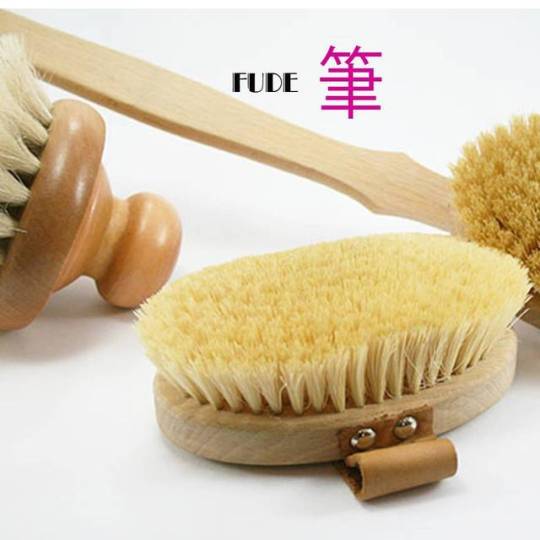
筆 (ふで) Noun 1. writing brush Learn a word a day with goo.gl/l30eR9 #wordoftheday #learn #japanese #vocabulary #jlpt #jlptn3 #nihongo #kanji #japan #japanesevideocast #lingovideocast #videocast #learnjapanese #languages #studyjapanese #japaneselanguage #lovejapanese #japanlovers #日本語 #lovejapan #nihon #japanesewords #japanesephrase #sensei #hiragana #筆 #ふで #fude #writingbrush #JLPTN3 #sankyuu
#japaneselanguage#learnjapanese#lovejapanese#learn#nihon#japanesephrase#lingovideocast#japanese#jlptn3#studyjapanese#languages#videocast#nihongo#kanji#vocabulary#japan#japanesewords#jlpt#lovejapan#writingbrush#hiragana#筆#日本語#fude#sensei#japanlovers#sankyuu#ふで#japanesevideocast
0 notes
Text
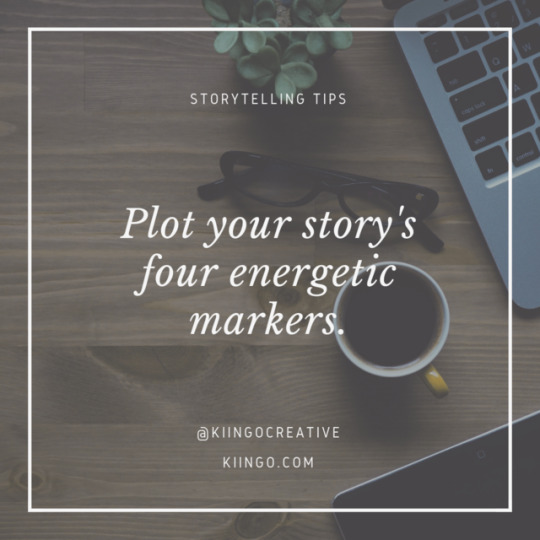
When outlining your story, consider plotting your four key "energetic markers" first. These will be the tent poles of your story. You can use these turning points to determine where the emotion should crescendo and change polarity (from positive to negative or from negative to positive). Jordan Rosenfeld expands in Make a Scene: "Energetic markers are the four key 'fixed positions' at the design level of the entire story: Point of No Return, Rededication, Dark Night, and Triumph. They are called Energetic Markers because, like in a musical performance where a gradual increase in the loudness of a sound or section of music crescendos, the energy of the story gradually increases as the scenes begin to reach the four key markers. This gradual increase peaks in the scene or section of scenes that play out at the Energetic Markers." These four markers roughly correlate to the inciting incident (25%), midpoint (50%), crisis (75%), and climax (90%).
#screenwriting#storytelling#writing#amwriting#creative writing#writers#writers on tumblr#writingtips#authors on tumblr#authors#write#writerblr#writingbrush#writeblr#writing community#writingcommunity#writing advice#writing tips#writing reference#writing resources
66 notes
·
View notes
Photo
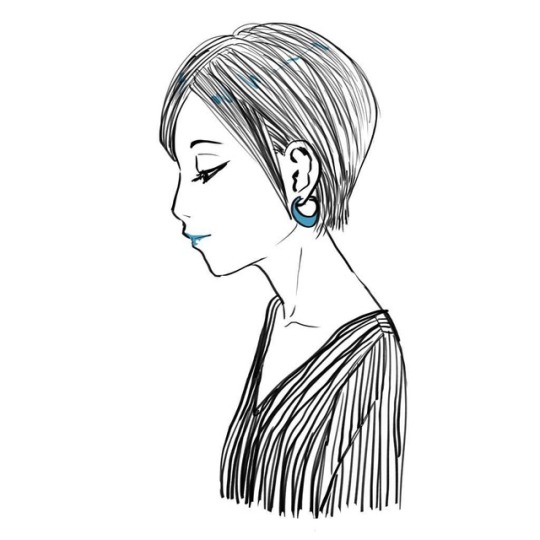
#woman #linedrawing #illustration #art #design #drawing #digitalart #digitaldrawing #graffiti #doodle #writingbrush #bob #bobcuts #short #插图 #插圖 #일러스트 #아트 #รูปภาพ #งานศิลปะ #イラスト #アート #デザイン #線画 #女性 #筆ペン #落書き #ボブ #ショートボブ
#デザイン#ボブ#bob#linedrawing#graffiti#illustration#アート#일러스트#งานศิลปะ#bobcuts#插圖#線画#落書き#아트#รูปภาพ#イラスト#筆ペン#short#插图#doodle#design#writingbrush#digitaldrawing#woman#ショートボブ#女性#art#digitalart#drawing
0 notes
Text

Why do we want your hero to win? What techniques are you using to establish empathy for your hero early on in the story? Carson Reeves notes how important "root-for-ability" is in a story: "If we’re not rooting for your hero, we’re not interested in your hero. And if we’re not interested in your hero, we don’t care about their story. So you have to give us a reason to root for them. This is one of the primary mistakes beginners make. They create unlikable or middling protagonists who don’t exhibit any qualities that would make someone want to watch them. There are a number of ways to make your character “root-for-able,” and I’ll get into a lot of them later, but one of the easiest ways is to make them “likable.” If we like your character, we’ll want to follow him. For example, you can make your character selfless (e.g. Forrest Gump), you can make your character love their son unconditionally (e.g. Liar Liar), you can make your character brave (e.g. Jake Sulley from Avatar). Once we like a character, we’ll root for that character."
#screenwriting#storytelling#writing#amwriting#creative writing#writers#writers on tumblr#writingtips#authors on tumblr#authors#write#writeblr#writerblr#writingbrush#writing community#writingcommunity#writing advice#writing tips#writing reference#writing resources
61 notes
·
View notes
Text
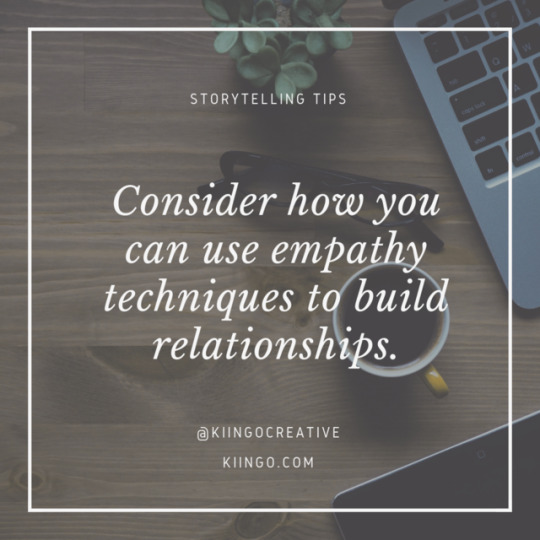
There are a great number of techniques to create empathy for a character including showing human virtues, showing undeserved misfortune, and dramatizing an unusually proficient skill. The great news is that many of these techniques also apply to relationships. When we see a couple perform what John Truby calls “the great dance”, we’re fascinated and intrigued by the sparks that fly. These two are having a magical interaction that no one else could. Empathy can also be generated through undeserved misfortune for the couple. When other people don’t want a couple to be together, all of a sudden we do. Don’t try to stop their love! There’s an instinctive backlash against any sort of undeserved misfortune. We feel sympathy for the couple. Romeo and Juliet is perhaps the most prominent example. Consider how you can use empathy techniques for relationships.
#screenwriting#storytelling#amwriting#creative writing#writers#writers on tumblr#writingtips#authors on tumblr#authors#writing#write#writercommunity#writeblr#writerblr#writingbrush#writing community#writingcommunity#writing tips#writing advice#writing reference#writing resources
29 notes
·
View notes
Text
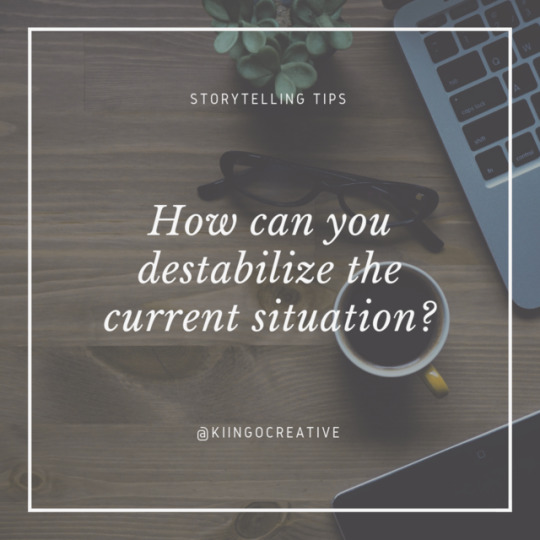
Narrative is the act of destabilization. Chuck Wendig points out: “This is why in the units of narrative measurement, those units often end with a kind of upset -- a scene, a sequence, an act all end with SOMETHING CHANGING. The larger the narrative unit, the larger that change will likely need to be." The destabilization might be either a threat/problem or an opportunity that helps or hinders the protagonist. Destabilization can also have the appearance of being positive but might actually be negative (which is often the case if it's an "opportunity"). It might be a temptation which sacrifices short term goals for long term goals. Or it might be a lie which appears fantastic on its surface but is leading directly to a trap. Or it might be something that is truly good on its surface but is a doorway to other complications and problems (finding a bag full of cash when someone's looking for it). So throw a threat at your character. Give them an opportunity. But change something! It moves the story forward. How can you destabilize the current situation?
#screenwriting#storytelling#writing#amwriting#creative writing#writers#writers on tumblr#writingtips#authors on tumblr#authors#writeblr#writingbrush#writing community#writing tips#writing advice#write#narrative
103 notes
·
View notes
Photo
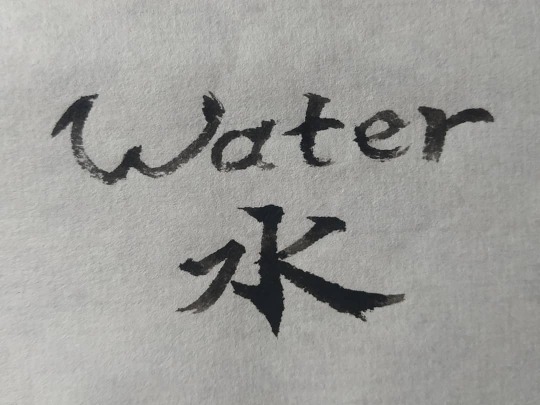
中西合璧了,尝试一下用毛笔写英文。 I try to use #writingbrush to write #English. #calligraphyquotes #calligraphybasics #calligraphybeginner #calligraphy_daily #calligraphy_art #calligraphydesign #calligrapher #calligraphytutorial #calligraph #calligraphy #calligraphyart #calligraphydaily #chinesecalligraphytattoo #chineseart #Chinesecalligraphy #chinesetattoo #chineselearning #書法 #書 #書家 #書法藝術 #書道 #shodo https://www.instagram.com/p/COUV9G1BDoV/?igshid=w7kliw4fxw0r
#writingbrush#english#calligraphyquotes#calligraphybasics#calligraphybeginner#calligraphy_daily#calligraphy_art#calligraphydesign#calligrapher#calligraphytutorial#calligraph#calligraphy#calligraphyart#calligraphydaily#chinesecalligraphytattoo#chineseart#chinesecalligraphy#chinesetattoo#chineselearning#書法#書#書家#書法藝術#書道#shodo
0 notes